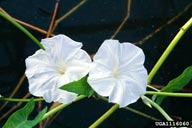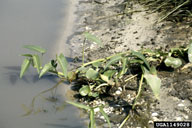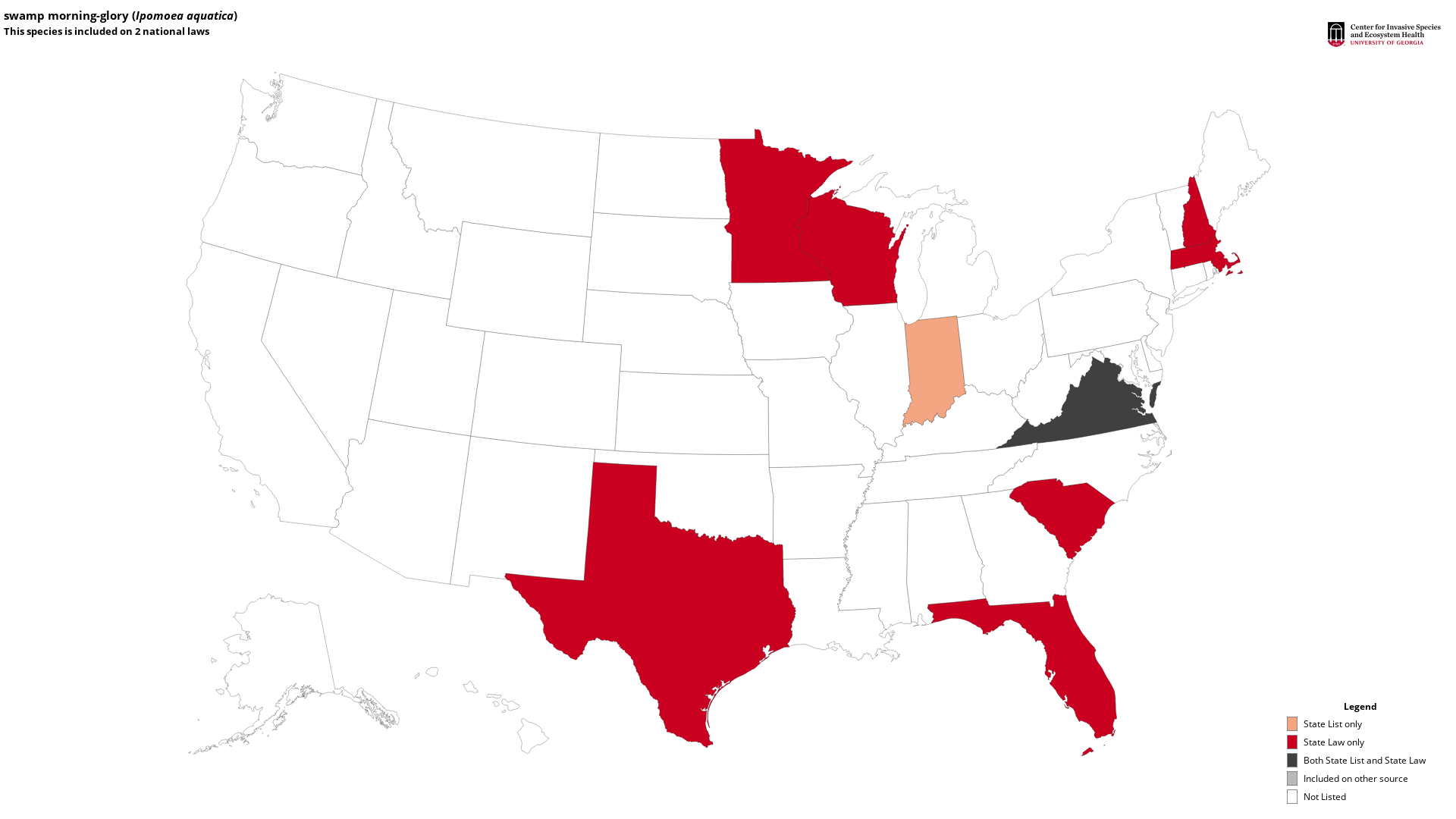| swamp morning-glory | USDA PLANTS Symbol: IPAQ U.S. Nativity: Exotic Habit: Aquatic Plants Vines |
| Ipomoea aquatica Forssk. |
Jump to: Resources | Images | Distribution Maps | Sources
|
Taxonomic Rank: Magnoliopsida: Solanales: Convolvulaceae |
|
| Synonym(s): swamp morning-glory, Water spinach, Swamp-cabbage, Ipomoea reptans,chinese water spinach, swamp morning glory, swanp morningglory | |
| Native Range: China - cent. to south. () ; Not Found (BAIL) | |
|
|
Identification, Biology, Control and Management Resources
|
| Selected Images from Invasive.org | View All Images at Invasive.org |
 Infestation; USDA APHIS PPQ - Oxford, North Carolina , USDA APHIS PPQ, Bugwood.org Additional Resolutions & Image Usage |
 Flower(s); Charles T. Bryson, USDA Agricultural Research Service, Bugwood.org Additional Resolutions & Image Usage |
 Flower(s); Charles T. Bryson, USDA Agricultural Research Service, Bugwood.org Additional Resolutions & Image Usage |
 Flower(s); USDA APHIS PPQ - Oxford, North Carolina , USDA APHIS PPQ, Bugwood.org Additional Resolutions & Image Usage |
 Flower(s); Florida Division of Plant Industry , Florida Department of Agriculture and Consumer Services, Bugwood.org Additional Resolutions & Image Usage |
 Plant(s); USDA APHIS PPQ - Oxford, North Carolina , USDA APHIS PPQ, Bugwood.org Additional Resolutions & Image Usage |
 Seed(s); USDA APHIS PPQ - Oxford, North Carolina , USDA APHIS PPQ, Bugwood.org Additional Resolutions & Image Usage |
 Seed(s); Ventral view of two seeds showing hilum. FNW taxon. Julia Scher, USDA APHIS PPQ, Bugwood.org Additional Resolutions & Image Usage |
| EDDMapS Distribution: This map is incomplete and is based only on current site and county level reports made by experts and records obtained from USDA Plants Database. For more information, visit www.eddmaps.org |
 State List This map identifies those states that list this species on their invasive species list or law. 
|










